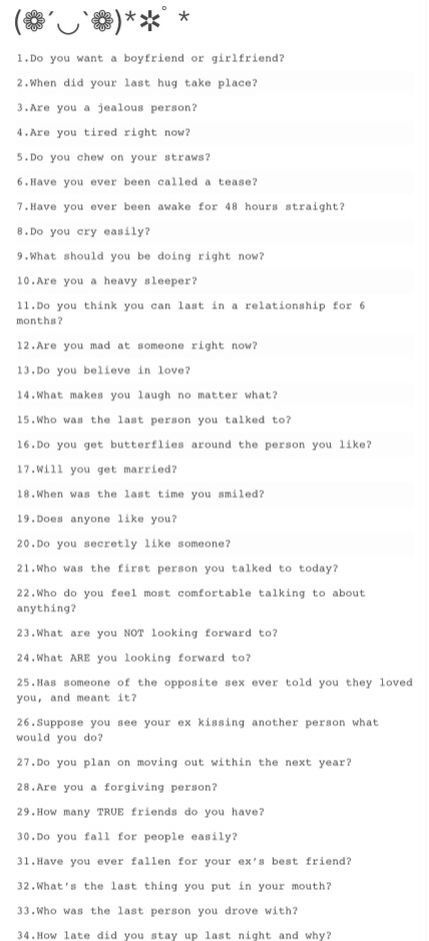
The strategy of change management helps individuals and teams adapt to changes. It can be implemented effectively and help organizations achieve their goals, while decreasing the negative consequences. This includes communication, planning and training. A well-integrated and proactive change management strategy is essential. Effective communication is key to the success of your initiatives.
Major organizational changes take time to embed. It depends on the change. These could include rebranding and adding or eliminating products, introducing new technologies or replacing staff. There are also financial and logistical risk associated with changes. No matter what type of change is being implemented, employees can be less affected by an effective strategy. Your approach should be well-planned.
Change management involves defining corporate strategies and procedures, as well as managing people and resources. An organized change management strategy can be adopted by organizations to minimize disruption, increase innovation and improve morale. Employers must work with HR to identify key performance metrics and develop a change roadmap. This will ensure that an organized approach is taken. An assessment of the impacts on processes and systems should be part of a Change Plan.

Employee resistance is a common problem during major changes. Employees may be unwilling to adapt, have limited skills, or lack behavioral traits that are necessary to succeed. It doesn't really matter if it is internal or exterior resistance that negatively impacts productivity. Employers can counter this resistance by building relationships and increasing trust between management and employees. Employers should not underestimate resistance.
Leaders have to actively encourage change. For this, they must make it clear why the change is needed and how it will benefit the organization. They must be open and willing to receive feedback from their colleagues before they can deliver the message. They should celebrate any positive change that is made and start to make it a habit.
It is the easiest changes that make the biggest impact. This is because employees are more likely to trust information from their managers. They also tend to look at the bigger picture and not the details.
Changes can be challenging to manage, especially if many people are involved or different departments are involved. Because of this, it's important to work with a guiding coalition to define a common goal and build trust through joint activities. These partnerships can be used to help with early successes as well as to create a framework for dealing with resistance.

To spread the word about your changes, as part of a group called a guiding coalition you can use multiple communication channels. For example, you can email employees, publish articles on your website, or use social media to let them know about the change. It is important to ensure that your messages reflect the company culture. Keep your message simple and consistent to reduce resistance.
FAQ
What other ways could I begin a dialogue with someone?
While it is intimidating to strike up a conversation without a partner, there are simple ways you can make it easier. To begin, find common ground. This could range from discussing current events to talking over hobbies or favourite movies.
Posing open-ended, non-binding questions is a great way to get started in a conversation. These are questions that require more information than can be provided with simple answers.
You can also use compliments to start a conversation. Compliments don't have to be physical - they can be about someone's intelligence, sense of humor, or any other trait you admire.
Try to smile and make eye contact when approaching someone. This will make it easier to establish a rapport with someone.
What are your top tips for engaging in meaningful conversation?
When engaging in meaningful conversations, it is important to be mindful of your body language and facial expressions. Maintain eye contact and open body language to show you are listening and actively participating in conversations.
It is also important to ask questions that encourage thoughtful responses from your conversational partner. Instead of asking them yes or no questions, ask open-ended questions that encourage your conversation partner to give their opinions or tell a story.
Aside from showing genuine interest, you should be open to the conversation and listen actively to what your partner says. By responding with natural flow responses, and not interrupting their conversation, you can demonstrate active listening.
Finally, be sure to maintain a positive attitude and avoid topics that could lead to arguments or disagreements. Respecting others' opinions will encourage understanding and facilitate meaningful conversations.
Why is it so hard to make friends in midlife?
Friendship in midlife, while a complicated business, is much more rewarding than friendships made during childhood or college.
The stakes feel higher, and the odds of success more daunting. It takes taking risks, being vulnerable and accepting discomfort.
You have to be open and willing to go out with no guarantees that someone will join you. There's nothing worse than cancelling last-minute when your social calendar is already crowded.
You may have just moved in the past, or perhaps you are too busy taking care of your home and work that you don't have time to spend socializing. There can be an immense feeling of guilt when you're forced to choose between your own self-care and seemingly 'irresponsible' behavior in favor of something (or someone) else.
Then there's the fear that no one likes you or that people are measuring every word you say to evaluate its value as a "friendship." All these factors make it hard to just jump into a group and start talking like we used to in our youth. It's almost as if everyone has their own clique, and we don’t fit in.
Making friends in midlife takes courage, serious effort, and resolve if we are going to break through all the barriers standing between us and form meaningful connections with others.
It is possible. It is possible to get involved in clubs and activities that are of interest to you. This will enable you to meet other like-minded individuals and build friendships. You can also take classes, attend events, volunteer for causes that are important to you or join online communities where you can connect with people who share your interests.
Another way to make friends in midlife is to reach out to people you already know. Perhaps there is a neighbor you like, or a former friend you missed in high school. Taking the initiative and making the first move can be scary but it will open up a whole new world of possibilities and friendships.
How to make a girl blush during a chat?
Chatting online with a girl can make flirting easy and fun. Make her smile and show interest by asking questions, making compliments and using flirty Emojis. Fun banter is also key - a little bit of light-hearted teasing or joking goes a long way. Keep it light and flirtatiousness is about having fun.
The best way to make a girl blush in chat is to ask her meaningful questions that let her know you're interested in getting to know the real her. Be sincere and not just chummy pick-up lines. It is important to not make your intentions seem disingenuous, as girls will often tell if someone is not being sincere with their feelings.
If you want to make a girl blush, compliments are a must. However, be mindful not to go overboard with compliments. Remember to keep your compliments sincere and genuine. A simple "You have gorgeous eyes" and an emoji that shows hearts rising from your head can make a girl feel extra special.
You can make a girl smile by laughing and teasing her. Joking with one another without any intention of being serious will lighten the mood and show that you are interested in them. Girls tend to appreciate someone who has an ability for smart humor and knows how to keep things fun without taking them too seriously - don't take yourself too seriously either!
Remember that flirty conversation should always have a positive outcome for both the participants. Talk about current events and politics only if she brings them up. Avoid deep discussions about past relationships or feelings. Don't be too serious by exchanging too many compliments or expressing emotions too quickly. Flirting shouldn't become too uncomfortable for anyone. Comfort should always be the top priority.
What are some good tips to make friends during midlife?
It can be difficult to make friends in middle age, but it is possible. It is important to be open and willing to take initiative. These are some tips to get you started.
-
Get involved in clubs and classes that interest your interests. This is a great opportunity to meet people like you and forge meaningful connections.
-
Reach out and touch people you know.
-
Get involved in activities - volunteer for causes that are important to you or attend events that interest you.
-
Join online communities to meet people with similar interests.
-
Ask questions and listen intently - ask questions when you speak to someone and pay attention to their answers. This will help in getting to know the person better.
-
Share stories from your own life - talking about past experiences can help you bond with your new friend and create a deeper level of understanding between the two of you.
-
You should be open to new opportunities. Don't be afraid or hesitant to try new things and get out of your comfort zone. This can help you meet new people, and make new friends.
-
Keep trying - friendship takes time and effort. Keep going out and you'll eventually meet the right people.
What topics can be used to keep a conversation going and what are the best?
Finding topics that are relatable to both sides is the best way to keep a conversation going. Ask questions about your hobbies or discuss current events. If you're stuck for ideas, try asking "what was the last book you read" or "what do you think of that new movie everyone 's talking about?"
If you can find something that both of you are passionate about, the conversation will flow naturally and be much more enjoyable. Another option is to ask open-ended, non-binding questions that invite your conversational partner or friend to offer their opinion and/or share a story.
You could also talk about shared experiences, such as travel, or common interests like music, art, or food. If you're struggling to find something to talk about, try asking your conversational partner questions about their life--where they grew up, what their family is like, or what their dream job would be.
Last but not least, inject some humor into the conversation. Funny stories and jokes can help to lighten the mood, and allow you both to have more fun and open communication.
How can you spice things up in a conversation?
For a memorable and enjoyable gathering, lively conversation is key. To really make things shine, you need creativity, quick thinking and charm.
Prepare some conversation starters for when you're talking with strangers and friends. Ask about the things that everyone loves: movie picks or travel stories. Let their stories inspire your own enthusiasm.
Don't be afraid to take a detour off the beaten track! Unusual questions can often spark laughter or reflection, and these are great topics for entertaining guests. Challenge yourself to keep guests on their toes by asking them what they'd do if they could have any superpower, which current trends they can't get behind, and more surprising subjects like these.
You can inject humor into conversations, but keep it respectful. A funny joke can help break up tensions. Funny observations or quotes about everyday situations can seamlessly transition topics without becoming too serious. You can keep others engaged by your body language and show appreciation for their ideas through attentive listening.
Let's all have a conversation about building relationships - finding common ground between different mindsets is key to understanding the power and potential of many perspectives.
Statistics
External Links
How To
How do I use pick up lines to break the ice, make a good first impression, and create a rapport with my client?
A bold move to make a first impression is making a pick-up line. They are intended to be funny and clever and can often make someone smile.
When done properly and with humor, pick-up lines can be an effective way of breaking the ice. Pick-up lines can bring joy to their day and let them know that you are a good person.
Pick-up lines must not be offensive, creepy or aggressive. You should be genuine and appropriate to the situation. Remember, this isn't about trying to score someone; it is all meant as lighthearted fun!
Keep it casual and playful while being confident in yourself - don't take things too seriously yet still remain dapper with charm - your unique spin on tried-and-true pick-up lines will make sure you stand out from the crowd!